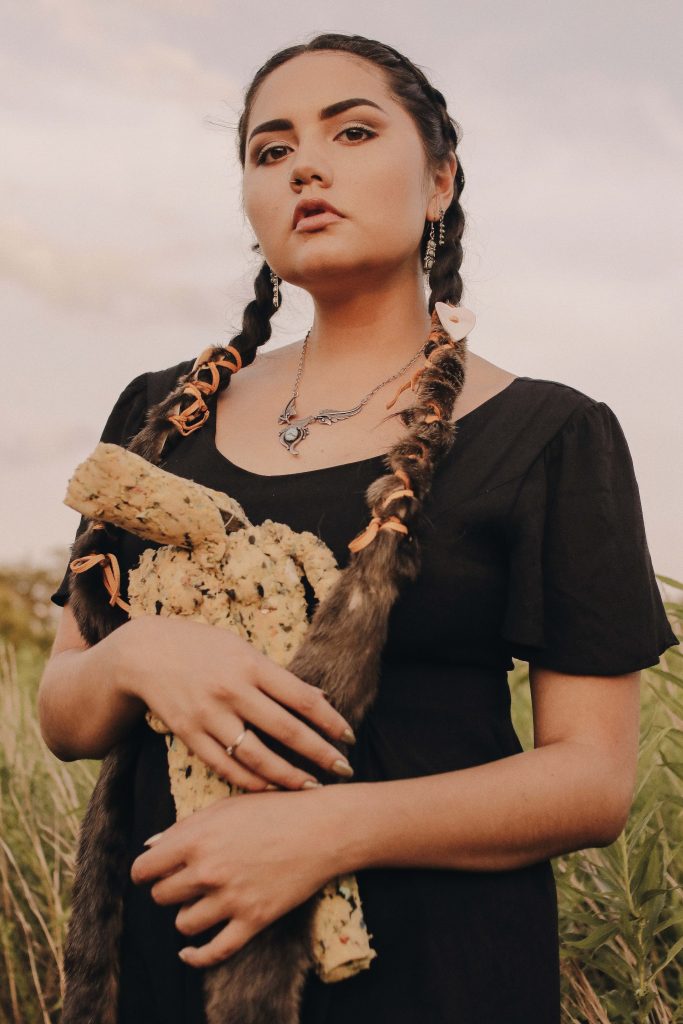
THE HOUSE LIGHTS ROSE, AND WE WEPT.
Thunderous applause filled the overcrowded Grand Salon at OZ Arts Nashville. The dancers smiled, took a bow, then another, and likely more after that. I can’t recall the number of curtain calls since dancers bow a lot after they perform, and the show was in the summer of 2014. We had just witnessed the professional debut of New Dialect, and the Nashville-based contemporary dance company, led by Artistic Director Banning Bouldin, had rocked the house. Unsure of community interest in a Thursday night performance by a new arts group, OZ staff scrambled to make room when more than seven hundred people showed up. Dance enthusiasts were jammed into every inch of available space, just shy of a fire code violation. When the program ended, nearly all of those seven hundred were on their feet, cheering for the dancers of New Dialect and for the birth of a powerful new presence in the Nashville dance community.
The performance was spectacular, but that wasn’t the only reason my wife, Kathryn, and I had tears in our eyes. We’d moved from New York at the end of 2013 to be closer to her family, and she took a position as the director of the dance division for Metro Parks and Recreation. After she had spent nearly twenty years in the vibrant, expansive dance community in New York City, we both worried that she might have a hard time finding artistic fulfillment without regular exposure to the sort of challenging, world-class contemporary dance that was once so readily available. And then, as we watched Banning and her supremely talented dancers leave the stage accompanied by the audience’s ecstatic approval, we were overwhelmed with emotion to see that we, and Nashville, had access to dance of the highest caliber.
From her first classes at the Green Hills School of Dance and the School of Nashville Ballet, Banning Bouldin has risen through the dance world to become one of Nashville’s leading contemporary choreographic voices. Her work is dense with texture and detail, technically demanding, and stunningly beautiful. To find out how this Bellevue ballerina has come so far, I meet Banning for a conversation at the Centennial Performing Arts Studios (formerly the Centennial Arts Activity Center), where New Dialect is the company in residence. We start at the beginning, talking about the early classes that were important for her technique but not entirely satisfying. She explains that as a child, she “could never figure out why I loved to move my body so much, but I didn’t really enjoy the dances that I was watching. I was attracted more to doing the really physical work that the men were often asked to do.”
Without understanding the nature of her discomfort, Banning was moving away from more traditional dance forms. But the search for a movement language that spoke to her within the limited dance world of Nashville came up empty. As a frustrated teenager looking through a dance magazine, she came across an advertisement for The Juilliard School’s first-ever summer intensive. Banning remembers the moment vividly. “The photo was gorgeous, of this man and this woman. The way that they were captured, and their partnering, I had never seen shapes like that. The whole ad was just a totally different dynamic, even in this still image.” The ad explained, “Ballet dancers can do modern too,” and her teenage heart leapt, only to sink when she noticed the fine print: they would only accept forty applicants. I’m never going to get in, Banning told herself. But she was undeterred. “I was very ambitious as a kid. Not a great amount of self-esteem, but . . . If I’m interested in it, I’m gonna go for it. Probably won’t get it, but I’m gonna try.”
Remarkably, out of the likely thousands of dance students from around the country, Banning was accepted. She wept with joy when she got the letter. After a transformative New York summer working with luminaries of modern and contemporary choreography, she returned home only to find the dance scene in 1996 Nashville even more limiting. “My mind was totally blown at the end of that summer. I came home and [said to my] Mom, ‘There’s nowhere in Nashville for me to get this kind of training. There’s nowhere in Nashville for me to do this kind of dancing. People aren’t exploring this kind of process here. And there’s not an audience for this kind of work here yet.’”
“I WAS ATTRACTED MORE TO DOING THE REALLY PHYSICAL WORK THAT THE MEN WERE OFTEN ASKED TO DO.”
Until recently, Banning felt that the audience for contemporary dance still didn’t exist in Nashville. After receiving her BFA at Juilliard, she spent years dancing around the world: New York, Chicago, Sweden, France, all the time honing her craft, learning new ways to understand the body, new ways to move bodies across the stage. Still, for all her worldly experience, Banning tells me that her early years powerfully informed her founding of New Dialect. Her hope is that no Nashville dancer yearning to study contemporary dance will ever have to leave again, so she’s worked to establish resources to encourage the growth of the Nashville dance community. Banning explains, “I started New Dialect not as a dance company. I really wanted us to be a resource for modern and contemporary dancers, choreographers, and teachers in Nashville to come together, research together, have a place to train, that was open to everybody [and] supported everybody.”
New Dialect offers morning classes hosted by abrasiveMedia in Houston Station, and they’re open to the public. But the classes are just one part of the greater whole of Banning’s vision. The morning gatherings breed relationship and camaraderie. Banning tells me, “Pretty much anyone who is making or teaching in the modern and contemporary dance community right now in Nashville teaches on our roster.” Banning wants to cast a net as broadly as possible, expanding the borders of Nashville’s dance community, and, by extension, the breadth of artistic expression. The classes give dancers from all over the city an opportunity to experience Banning’s unique dance vocabulary for themselves, a chance to try it out on their own bodies.
About that dance vocabulary. Two choreographers might watch clips of the same historic dance performances, read the same books, go to the same classes, and come out with radically different patterns of motion and body positions. Banning’s Juilliard curriculum emphasized a wide-open approach to dance learning, exposing her to a variety of dance styles. “Their mission was to create a fusion dancer,” Banning explains, “who was well-versed in a number of different movement vocabularies, styles, approaches, techniques. And then because we had this arsenal of tools, we could draw from them in the invention of new movement vocabularies with new choreographers. That’s the part of the process that I’ve always been drawn to.”

Through those lessons and during her years dancing with companies around the world, Banning developed the movement language that makes New Dialect such a gift to watch. She can make a whirlwind crossing of the stage by her company a thing of beauty, grace, and athleticism combined with a laser focus and pinpoint technique from her dancers. During one of the New Dialect rehearsals I attended, she tells her dancers, “We can move quickly, liquid-like, without losing that clarity and detail.” Banning admits that she is obsessed with detail. “I’m really interested in detail and specificity, like taking everyday gestures, like talking with our hands, and amplifying those to become more full movements. A trademark of a lot of the work that I’m making now is that I’m interested in these mass partnerships, where you have multiple people who are supporting each other, partnering each other, all interconnected, threading in and out of each other to create these sculptures. Moving sculptures.”
Most of all, Banning believes that what makes her dance creations unique is the creative process, which she calls collective composition. She might arrive to rehearsal with her notebook full of ideas, but the group takes a shared approach to developing movements. “The creative process for us is so collaborative. I come in with images, constructs, compositional games that I will engage the dancers with to stimulate their imaginations into generating material or movements from their understanding.” In this model, her dancers have to be highly skilled improvisers, ready and willing to work through Banning’s choreography while adding their own concepts and movements.
I want to see for myself what it looks like when choreography is created together, so I come to a New Dialect rehearsal at Centennial. The company is working on the final section of Atlas Kid, a work that will premiere in April as part of the illustrious Visiting Artist series at OZ Arts. Banning watches from the sideline, her notebook in one hand, her ubiquitous e-cig in the other. Two dancers, Emma Morrison and Becca Place, are moving through a duet, while two others, Ben Green and Rebecca Steinberg, echo their movements to learn the steps. Taller than Emma by at least a foot, Becca is bent down on the ground with Emma’s legs draped over her shoulders. They move in tandem. Becca moves Emma’s legs forward with her hands. Emma stretches her body, closes her eyes, and opens her mouth wide in a silent scream. Banning counts a quick eight beats. Eight beats again. The two dancers curl around each other, then separate. They shift into plank position, their faces inches from each other. “Yes, nice discoordination!” Banning shouts. The steps require an incredible physicality, with punishing movement that makes the dancers look as if they’re trying to leap out of their own bodies. It’s breathtaking. I can’t imagine the strain of performing this choreography for a full-length work.
Emma is exactly who Banning had in mind when she founded the company. She left Nashville when it failed to meet her artistic goals, but she eventually heard about New Dialect. She came home, started taking classes with Banning, and then joined the company. Emma calls Banning “a mentor, teacher, choreographer, genius director” and tells me that one of her proudest moments came recently on a trip to San Francisco. “There were people coming up to me, and they’re like, ‘You dance with New Dialect! Are you guys doing an intensive? We’ve seen your work, we’ve seen your videos, we’re really interested in what you’re doing. We’d love to come hang out with you and work with you!’ Being from Nashville, and someone approaching me about a company in Nashville . . . [It] was totally different than anything I had experienced.” Emma and all the New Dialect dancers with whom I spoke were giddy with excitement to be a part of such challenging, complex choreography.
Banning’s brilliant choreography and organizational vision have put New Dialect, and Nashville’s evolving contemporary dance community, on the map. Souvenirs, the full evening of work that includes Atlas Kid, premieres at OZ Arts this April, with live music performed by the score’s co-composers, Mikael Karlsson and Lev LJOVA Zhurbin. The night is likely to be another triumph.
It’s been said that writing about music is like dancing about architecture. Unsurprisingly, Banning has taken the statement as a challenge. “With Atlas Kid, I was interested in exploring our individual memories of the architecture of specific places in our childhood homes that evoked strong positive or negative feelings. We remembered the texture, scale, weight, shape, and temperature of these spaces and used this information to build the gestures and movements in Atlas, as well as to create distorted tableaus of memories. I think the detail and imagery in the work are immediately identifiable, even potent, because they’re so human.”
For Banning, it’s a remarkable homecoming. She reminds me, “As a fifteen year-old dancer, there was nowhere for me to get the education I needed. There was nowhere for me to have a career as a professional contemporary dancer in Nashville.” But now, Banning, New Dialect, and Nashville’s dance community has, as Banning so astutely points out, “an opportunity to really change that. And that excites me.”
Suggested Content

Chelsea Kaiah James
Why aren't there any ears sculpted onto the presidents of Mt. Rushmore? Because American doesn't know how to listen. - Unkown

Contributor Spotlight: Dylan Reyes
When I create, I often think of what Johannes Itten said, “He who wishes to become a master of color must see, feel, and experience each individual color in its endless combinations with all other colors.”. I’m also inspired frequently by love and loneliness and want folks consuming my work to be encouraged to start paying attention to the little details in everyday life, appreciate the simple things, and let them eventually inspire you! Ultimately, I’m just trying to become a mother fuckin master of color.

Secondhand Sorcery
A look inside the beautifully cheesy world of Crappy Magic










